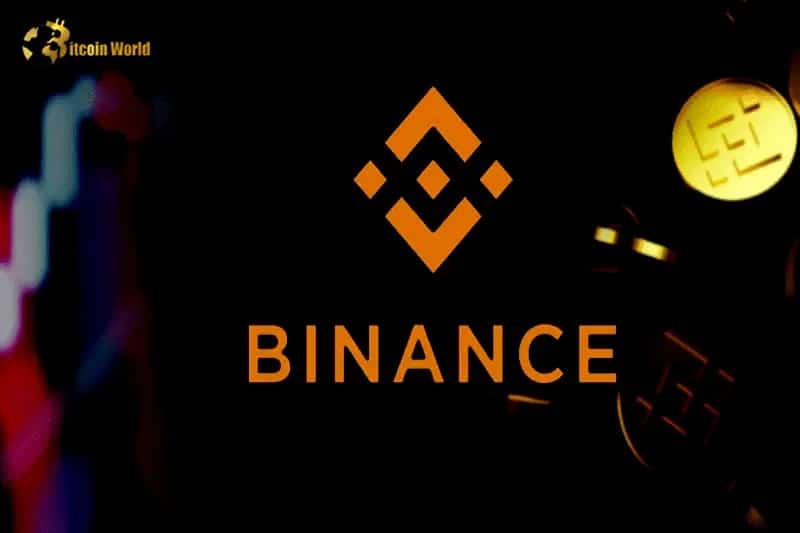In the fast-paced world of cryptocurrency, things can change in a heartbeat. Recently, the giant in the crypto exchange arena, Binance, has been making headlines, but not for the reasons it might prefer. Whispers of a slowdown in its spot trading volume have grown louder, and it’s not just Binance feeling the shift. Exchanges like HTX (formerly Huobi), Bybit, and DigiFinex are also experiencing similar trends. So, what’s behind this noticeable change in the crypto landscape?
Why is Binance’s Dominance in Spot Trading Showing Signs of Slipping?
The primary culprit appears to be the ongoing regulatory headwinds Binance is facing, particularly in the United States. These challenges seem to be steadily chipping away at Binance’s once-massive market share. Let’s delve deeper into the numbers and factors at play.
According to a recent report from CCData, a reputable cryptocurrency data provider, Binance’s spot market share has been on a downward trajectory for seven months straight. In September 2023, it landed at 34.3%, a further dip from 38.5% in August. To put this in perspective, rewind to January 2023, and Binance commanded an impressive 55.2% of the spot market. That’s a significant drop from the peak!
Jacob Joseph, a sharp research analyst at CCData, offers a nuanced perspective. He suggests that blaming the U.S. regulatory issues alone for Binance’s market share slump might be too simplistic. Joseph points to another key factor: Binance’s decision to end its zero-fee trading promotion for major trading pairs. Let’s break down these contributing factors:
- Regulatory Scrutiny in the U.S.: The regulatory landscape in the United States has become increasingly complex for crypto exchanges. Binance, like many others, is navigating these challenges, and this undoubtedly impacts user sentiment and trading activity, especially for users based in or interacting with the U.S. market.
- The End of Zero-Fee Trading: Remember when Binance offered zero-fee trading on certain pairs? It was a major draw, attracting traders looking to minimize costs. However, the cessation of this promotion has likely led some users, particularly high-frequency traders sensitive to fees, to explore other platforms.
Beyond Regulations and Fees: Strategic Market Exits
Adding another layer to this evolving narrative is Binance’s strategic retreat from certain key markets. A notable example is their complete exit from Russia in September. Binance sold its Russian business to CommEx, a newly launched exchange with undisclosed founders. Russia was a significant market for Binance, contributing nearly 7% of the platform’s total traffic. This withdrawal, while strategic, inevitably impacts Binance’s global market share.
Fee Structure Tweaks: Another Piece of the Puzzle
Early in September, Binance also adjusted its trading fee structure. They reintroduced regular taker fees based on user VIP levels. For regular users, this meant a 0.1% taker fee on spot and margin trades. While 0.1% is a common fee in the industry, the reintroduction of fees after a period of zero-fee promotions could influence trading behavior and platform choice for some users.
Who’s Picking Up the Slack? The Beneficiaries of Binance’s Shifting Share
As Binance’s spot trading volume has decreased, where has that volume gone? It appears to be distributing among other exchanges. Notably, HTX (formerly Huobi), Bybit, and DigiFinex have seen increased activity. Furthermore, in the derivatives market, exchanges like OKX, Bybit, and Bitget are reportedly gaining ground, capturing a larger slice of the pie.
Let’s consider who seems to be benefiting:
- HTX (Huobi), Bybit, and DigiFinex: These exchanges are seeing increased spot trading volume, suggesting that some traders are migrating from Binance to these platforms.
- OKX, Bybit, and Bitget: These exchanges are strengthening their position in the derivatives market, indicating a broader shift in market share across different trading products.
What Does This Mean for You, the Crypto Trader?
So, what are the takeaways for crypto enthusiasts and traders in light of these developments?
- Increased Competition: A slight redistribution of market share can foster a more competitive exchange landscape. Healthy competition can drive innovation, better services, and potentially more favorable trading conditions across platforms.
- Platform Diversification: For traders who primarily used Binance, this might be a good time to explore other reputable exchanges like Bybit, OKX, or others mentioned. Diversifying across platforms can reduce risk and potentially offer access to different features or trading pairs.
- Fee Awareness: Always be mindful of trading fees. While 0.1% might seem small, it can add up, especially for active traders. Compare fee structures across different exchanges to optimize your trading costs.
- Regulatory Developments: Keep an eye on regulatory news, particularly concerning major exchanges like Binance. Regulatory changes can impact platform accessibility and service offerings in different regions.
In Conclusion: A Dynamic Crypto Exchange Landscape
Binance’s market share adjustment is a significant development in the cryptocurrency exchange world. It highlights the impact of regulatory pressures, strategic business decisions, and the ever-present competition in this dynamic market. While Binance remains a dominant player, the slight redistribution of market share suggests a maturing and evolving crypto exchange ecosystem. For traders, this means more choices, a need for platform awareness, and the importance of staying informed about the factors shaping the crypto landscape. The crypto market never stands still, and this shift is just another chapter in its ongoing story.
Disclaimer: The information provided is not trading advice, Bitcoinworld.co.in holds no liability for any investments made based on the information provided on this page. We strongly recommend independent research and/or consultation with a qualified professional before making any investment decisions.


